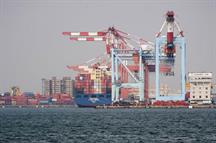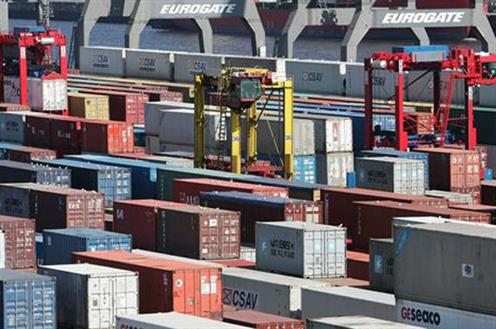The trade deficit shrank by 22.4%
Spain exported goods worth 254.53 billion euros in 2016, an all-time record
News - 2017.2.20
Consequently, the trade deficit for the year stood at 18.75 billion euros, 22.4% less than in 2015 and the second best balance since 1997, only behind 2013. Spanish exports performed better than those of the Eurozone and the European Union as a whole.
The coverage rate - exports over imports - stood at 93.1% (91.2% in 2015), the second best figure ever, beaten only by 2013.
By volume, exports increased by 3.5%, since prices fell by 1.7%. Meanwhile imports grew by 2.8% due to prices measured by Unit Value Indices (which only measure the prices of exported products) having fallen by 3.1%.
The non-energy balance posted a deficit of 2.52 billion euros (versus a surplus of 1.91 billion euros in 2015) and the energy deficit fell by 37.8% to 16.24 billion euros (versus 26.09 billion euros in 2015).
The performance of Spanish exports in 2016 was better than that of the Eurozone (up by 0.7%) and the EU as a whole (down by 0.1%). Exports by Germany (1.2%) and Italy (1.1%) increased to a lesser extent than in Spain, while in France (-0.9%), UK (-0.2%), USA (-3.2%), China (-6.4%) and Japan (-7.4%) exports all shrank.
In 2016 the number of exporters grew by 1% over 2015 to 148,794. In comparison with 2008 (the maximum achieved in the previous upward cycle), this represents a 46.7% increase. The number of regular exporters (those exporting for at least four straight years) also grew, by 4.2% to 49,792.
Economic sectors
 Ministerio de Asuntos Exteriores y de CooperaciónThe main sectors all showed export growth. Capital goods (accounting for 20.3% of the total) grew by 2.5%, the automotive sector (17.7% of the total) increased by 5.9%, and food, drink and tobacco (16.9% of the total) grew by 6.2%.
Ministerio de Asuntos Exteriores y de CooperaciónThe main sectors all showed export growth. Capital goods (accounting for 20.3% of the total) grew by 2.5%, the automotive sector (17.7% of the total) increased by 5.9%, and food, drink and tobacco (16.9% of the total) grew by 6.2%.
With regard to imports, the consolidation of the recovery of the Spanish economy is driving growth in most sectors. Imports of capital goods (22% of the total) grew by 7.6%, automotive sector imports (13.6% of the total) increased by 3.9%, while imports of consumer manufactures, food, drink and tobacco, and consumer durables grew by 6.5%, 4.2%, and 7.6% respectively.
Geographic areas
Exports to the European Union (66.3% of the total) were up by 4.1% during 2016. Sales to the Eurozone (51.8% of the total) grew by 4.4%, while exports to the rest of the EU (14.5% of the total) increased by 2.9%.
The unfavourable trade cycle in emerging countries caused exports to third countries (33.7% of the total) to fall by 2.6% in 2016. Exports to Latin America (-9.1%), the Middle East (- 4.8%), Africa (-0.4%) and Oceania (-17.3%) all diminished, while those to North America (0.3%) and Asia excluding the Middle East (3%) increased. Despite the general scenario, sales to high potential markets such as Canada (8.4%), China (13.4%), Hong Kong (10.2%) and Morocco (13%) increased.
The regional communities posting the strongest export growth were Castile and Leon (8.7%), Castile-La Mancha (7.7%) and Galicia (6.4%). The greatest decreases were recorded in the Canary Islands (-17.9%), Asturias (-6.8%), and Extremadura (-2.2%).
December's figures
In December, Spanish exports grew by 2.9% versus the same month in 2015, to 20.73 billion euros. Imports grew by 5.6% to 23.18 billion euros, causing December 2016's deficit to grow by 36.4% year-on-year to 2.45 billion euros. The coverage rate stood at 89.4%, 2.4 points less than in December 2015.
The non-energy balance posted a deficit of 911 million euros (210 million euros in December of 2015) and the energy deficit shrank by 3.1%.
Export growth in December was lower than the figure posted by the Eurozone (5.4%) and the European Union as a whole (4.9%). Sales by France (7.8%), Germany (6.3%), Italy (5.7%) and UK (14.5%) also grew. Outside the EU, exports from the USA (5.6%) and Japan (5.4%) grew, while exports from China fell (-6.4%).
Economic sectors
In December, the main contributions to export growth came from the following sectors: energy products (a contribution of 2.3 points), food, drink and tobacco (1.3 points), non-chemical semi-manufactures (0.7 points), raw materials (0.6 points), and consumer manufactures (0.5 points). The only sectors to record a negative contribution were the automotive sector (-1.3 points), other goods (-1.3 points), and capital goods (-0.2 points).
Geographic areas
 EFE
EFE
Last December exports to the EU accounted for 63.6% of the total (62.3% in December 2015), and grew by 4.9%. Exports to the Eurozone grew by 6.6% while sales to the rest of the EU diminished by 1%. With regard to Spain's main trade partners, increased sales to Italy (10%), France (6.1%) and Germany (1.6%) stood out, while exports to the UK fell (-5.6%).
Spain's trade surplus with the European Union stood at 231 million euros in December 2016 (versus a deficit of 83 million euros in December 2015). The trade balance with the Eurozone posted a surplus of 113 million euros (versus a deficit of 75 million euros in the same month of the previous year).
The executive summary and the full report, with tables, may be viewed on the Ministry website.





